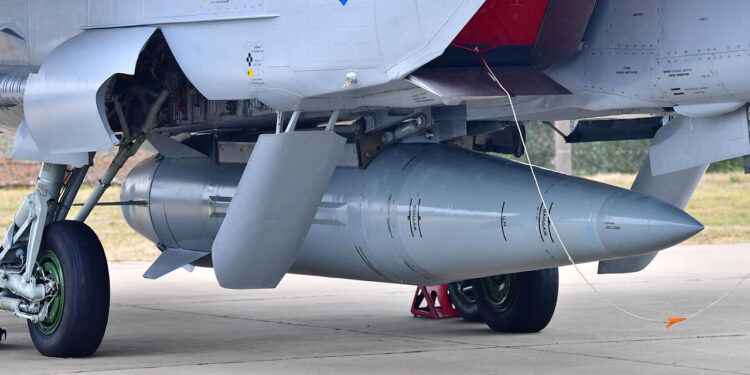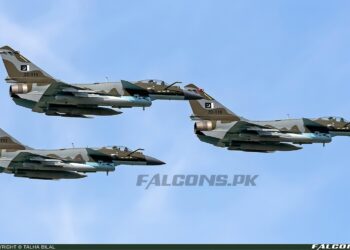The Ukrainian Air Force announced on December 14, 2023, the successful interception of a Russian Kh-47 Kinzhal hypersonic air-launched ballistic missile. The missile, aimed at the city of Kyiv, was reportedly neutralized by an American-supplied Patriot missile system, a notable achievement given the Kinzhal’s reputation as a nearly un-interceptable weapon due to its high-speed capabilities.
Yurii Ihnat, the spokesperson for the Ukrainian Air Force, confirmed the downing of the missile, marking a critical moment in the defense of the Ukrainian capital. “One missile was shot down,” Ihnat stated, highlighting the effectiveness of the air defense system in operation. The successful interception was later corroborated by Gen. Mykola Oleshchuk, Commander of the Air Forces.
Residents of Kyiv experienced multiple explosions throughout the day, which were attributed to the active engagement of air defense systems against incoming threats. The Russian forces had launched a series of Kinzhal ballistic missiles targeting various locations, including Kyiv, Starokostiantyniv, Khmelnytskyi Oblast, and Sumy Oblast.
The tension in the region escalated with four air raid alerts being issued across Ukraine. This response was triggered by the takeoff of MiG-31K fighter jets, which are known carriers of the Kh-47 Kinzhal missiles. Notably, reports of explosions also emerged from Dnipropetrovsk Oblast.
The interception of the Kh-47 Kinzhal hypersonic missile by Ukrainian forces represents a significant milestone in the ongoing conflict, demonstrating the capabilities of Ukraine’s air defense systems and the strategic impact of international military support. The incident is likely to have considerable implications for both tactical operations and diplomatic discussions surrounding the conflict.
The Kh-47 Kinzhal is a Russian nuclear-capable air-launched ballistic missile, first revealed to the public in 2018 as part of Russia’s efforts to modernize its military capabilities. This missile is notable for its exceptional speed, reportedly exceeding Mach 10, which is more than ten times the speed of sound. Such high velocity, combined with its maneuverability, makes it a challenging target for missile defense systems.
In terms of operational range, the Kh-47 Kinzhal hypersonic missile can travel approximately 2,000 km or about 1,240 miles. It is versatile in its payload capacity, being able to carry both conventional and nuclear warheads. The missile’s design allows it to be launched from high-speed aircraft, with the MiG-31 fighter jet being a commonly associated platform. The introduction of the Kinzhal into Russia’s arsenal represents a significant advancement in its strategic military capabilities, particularly in the realm of rapid response and penetration of enemy defenses.
Intercepting a hypersonic missile such as the Kh-47 Kinzhal is a significant challenge for missile defense systems like the Patriot, primarily due to the extraordinary speed of hypersonic weapons. These missiles travel at speeds greater than Mach 5, which is significantly faster than the targets Patriot systems were originally designed to counter. The extreme velocity gives defense systems a very short reaction time, making it difficult to detect, track, and engage the missile effectively before it reaches its target.
Another critical factor is the maneuverability of hypersonic missiles. Unlike traditional ballistic missiles that follow a predictable parabolic trajectory, hypersonic missiles can maneuver mid-flight, making their path unpredictable. This maneuverability complicates the prediction algorithms used by defense systems like the Patriot.
Additionally, the high altitude at which hypersonic missiles operate can be a challenge. Some hypersonic missiles travel in the upper atmosphere, at altitudes that are difficult for certain missile defense systems to reach effectively.
Furthermore, the kinetic energy carried by a hypersonic missile due to its high speed means that even a non-explosive direct hit can cause significant damage, requiring extremely precise interception capabilities.
These factors combined mean that traditional missile defense systems, which were primarily designed during a time when such speeds and maneuverability were not common features of offensive weapons, face considerable challenges in effectively countering modern hypersonic missiles like the Kinzhal. New technologies and strategies are continually being developed to address these challenges, but as of now, intercepting such advanced missiles remains a complex and demanding task.
The Patriot missile system, developed by Raytheon Technologies Corp., is one of the most advanced air defense systems in the U.S. arsenal. It was initially designed and used in combat scenarios like the 1991 Gulf War and later during the U.S. invasion of Iraq in 2003. However, it’s important to note that the Patriot system was developed before the advent of hypersonic weapons, which travel at speeds exceeding Mach 5. Since the beginning of the war, Ukraine has received Patriot air defense systems and missiles from Germany, the Netherlands, and the United States.
There have been recent reports, particularly from Ukraine, claiming the successful interception of Russian hypersonic Kinzhal missiles using the Patriot system. For instance, Ukraine reported that it had downed six Russian hypersonic Kinzhal missiles in a single night, a significant achievement considering the advanced nature of these missiles. Additionally, the U.S. military confirmed that Ukraine had shot down a Kinzhal missile using the U.S.-produced Patriot system. However, it was not explicitly clarified whether the Kinzhal missile was traveling at hypersonic speed at the time of interception.






